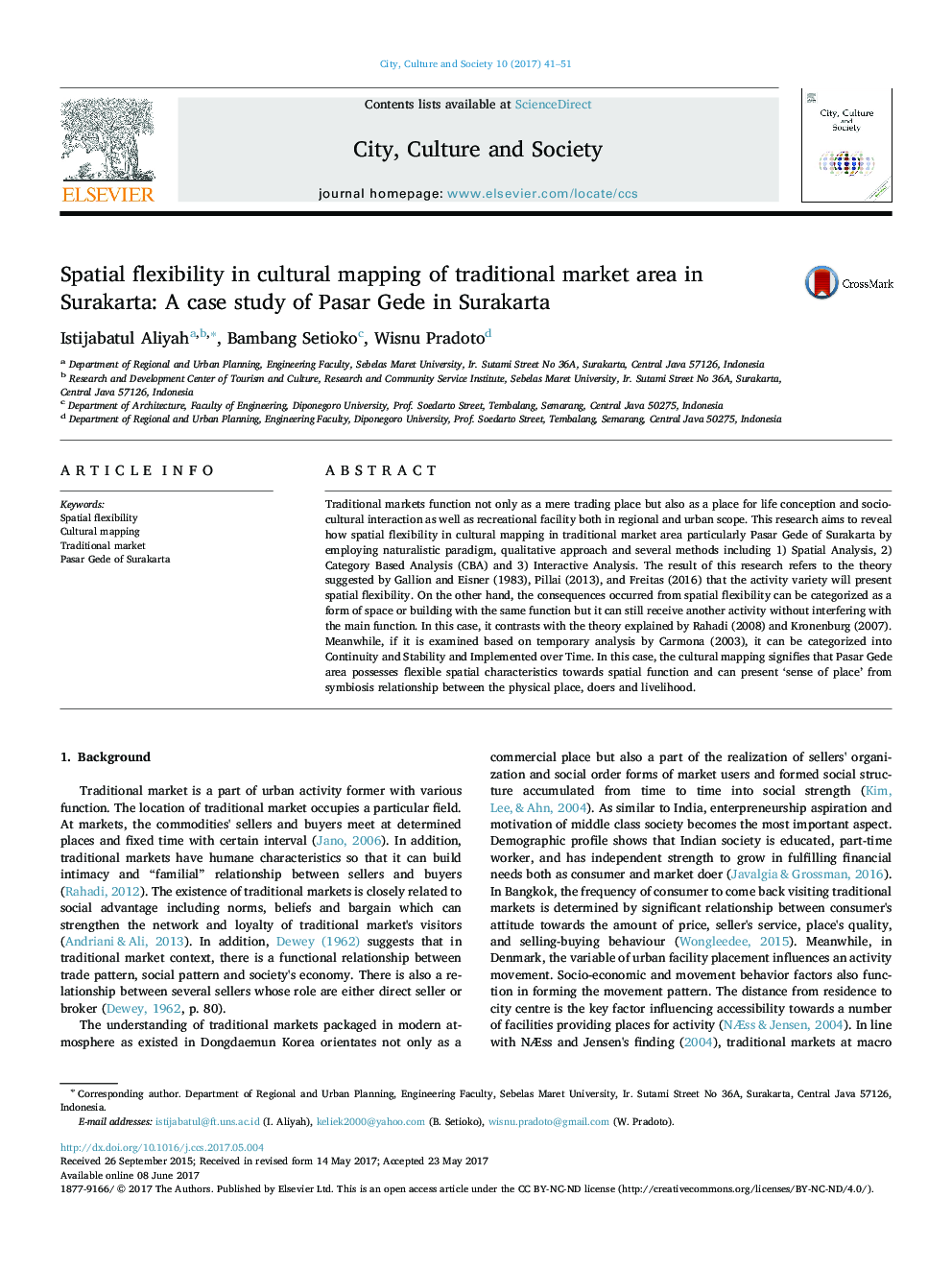| Article ID | Journal | Published Year | Pages | File Type |
|---|---|---|---|---|
| 5048160 | City, Culture and Society | 2017 | 11 Pages |
â¢The space in Pasar Gede has various activities, interconnected access and no rigid border.â¢Spatial flexibility of Pasar Gede area has constant function but it can still receive another activity without interfering with the main activity.â¢Pasar Gede can be economic, social and cultural facility with flexible spatial use because of its limited location and its position which is in the city center.
Traditional markets function not only as a mere trading place but also as a place for life conception and socio-cultural interaction as well as recreational facility both in regional and urban scope. This research aims to reveal how spatial flexibility in cultural mapping in traditional market area particularly Pasar Gede of Surakarta by employing naturalistic paradigm, qualitative approach and several methods including 1) Spatial Analysis, 2) Category Based Analysis (CBA) and 3) Interactive Analysis. The result of this research refers to the theory suggested by Gallion and Eisner (1983), Pillai (2013), and Freitas (2016) that the activity variety will present spatial flexibility. On the other hand, the consequences occurred from spatial flexibility can be categorized as a form of space or building with the same function but it can still receive another activity without interfering with the main function. In this case, it contrasts with the theory explained by Rahadi (2008) and Kronenburg (2007). Meanwhile, if it is examined based on temporary analysis by Carmona (2003), it can be categorized into Continuity and Stability and Implemented over Time. In this case, the cultural mapping signifies that Pasar Gede area possesses flexible spatial characteristics towards spatial function and can present 'sense of place' from symbiosis relationship between the physical place, doers and livelihood.
